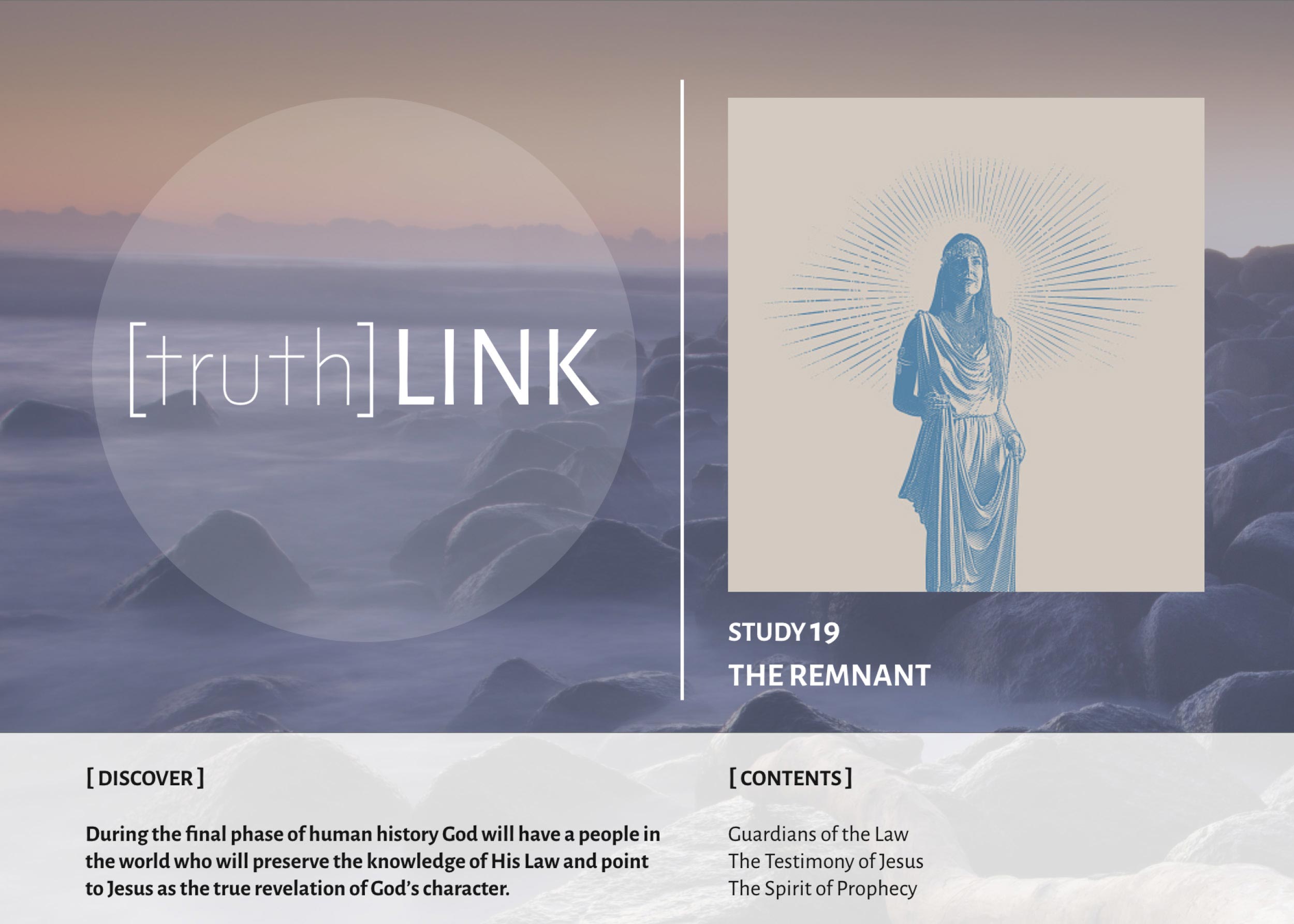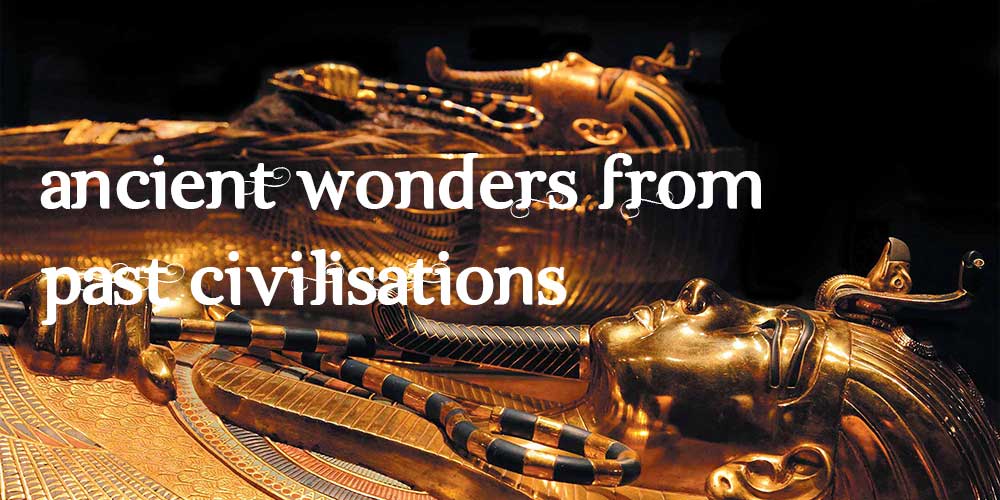
Guardians of the Law
Under the symbolism of a woman clothed with the sun, Revelation 12 tells the story of God’s church in three historical phases: the Apostolic Period, the Wilderness Period, and the Remnant Period. In our previous study we explored the first two of these phases and briefly introduced the third, which we will now look at more deeply by examining the two key characteristics of the remnant:
“And the dragon was enraged with the woman, and he went to make war with the rest [remnant, KJV] of her offspring, who keep the commandments of God and have the testimony of Jesus Christ” (Revelation 12:17).
In study guide 17 we saw that one of the identifying characteristics of the great apostasy foretold in Bible prophecy is that it would be an antinomian religious system. That is, it would align itself against God’s law. Paul specifically calls that system, “the mystery of lawlessness,” and he calls its leader, “the lawless one” (2 Thessalonians 2:7-8). We noted that the Church of Rome has, indeed, made a specific attack on God’s law.
In this historical context it makes total sense for “the remnant,” who emerge on the scene of history after the Dark Ages of papal supremacy, to be identified as a body of believers “who keep the Commandments of God.” The Greek word here translated “keep” is tēreō, which literally means to guard or preserve something, suggesting that the thing spoken of is in need of protection against attack. And so, in “the remnant” we have a people who, in the historical trajectory of “the lawless one,” guard and preserve God’s law.
Just as prophesied, the Advent Movement, arising in the early 19th century in the direct historical context of the great antinomian apostasy, discovered in Bible prophecy the foretold attack on God’s law and restored it to the Christian faith. While Catholicism and most Protestant denominations were teaching that God’s law was subject to the alterations men might impose upon it, and some were even teaching that it was completely abolished and, therefore, of no relevance to the Christian, the Advent Movement began to preach the unchanging nature of God’s law as a transcript of His character. They reaffirmed the second commandment and thus rejected all forms of image worship, and they played a major role in restoring the Sabbath to its proper place as God’s holy day of rest and worship. By directing attention to God’s law, the movement opened the way for a restored knowledge of God’s true character of love and a comprehension of the issues under dispute in the great war between good and evil.
The Testimony of Jesus
Not only did the prophecy state that the remnant would keep the commandments of God, but also the remnant would “have the testimony of Jesus Christ.” This identifying characteristic is of extreme significance in the historical context delineated in Revelation 12, because the papal system is not only described in Scripture as antinomian (against the Law), but also as antichrist (against the gospel of Christ). The apostle John issued this warning:
“Little children, it is the last hour; and as you have heard that the Antichrist is coming, even now many antichrists have come” (1 John 2:18).
The prefix “anti” means both against and in place of. The Amplified Bible accurately inserts after “the antichrist” a helpful interpretive note: “he who will oppose Christ in the guise of Christ.”
“Who is a liar but he who denies that Jesus is the Christ? He is antichrist who denies the Father and the Son. Whoever denies the Son does not have the Father either; he who acknowledges the Son has the Father also” (1 John 2:22-23).
The Greek word here translated “denies” is used by both Peter and Jude to describe false teachers, or those who claim to represent Christ while falsely portraying Him (2 Peter 2:1; Jude 1:4). Just as Paul indicated in 2 Thessalonians 2:4, the antichrist does not openly deny Christ, but rather “he sits as God in the temple of God, showing himself that he is God.” It is after the antichrist has come and has misrepresented Christ for 1260 years that John sees “the remnant” stepping onto the open stage of history as a people who “have the testimony of Jesus Christ.” Let’s discover from Scripture what this terminology means.
First, the word testimony refers to what a person knows firsthand to be true and makes known to others. John the Baptist explained that Jesus came to our world “from above” with a testimony:
“And what He has _________ and __________, that He _____________; and no one receives His _________________. He who has received His _________________ has certified that God is ________” (John 3:32-33).
Okay, so Jesus testifies regarding what He has seen and heard. But what is the content, the subject, of the testimony of Jesus?
“No one has ________ ______ at any time. The only begotten Son, who is in the bosom of the ___________, He has _____________ Him” (John 1:18).
“Most assuredly, I say to you, We [Jesus and the Holy Spirit] speak what We _________ and __________ what We have __________, and you do not receive Our witness” (John 3:11).
“Most assuredly, I say to you, the Son can do nothing of Himself, but what He ________ the ____________ do; for whatever He does, the Son also does in like manner” (John 5:19).
“As the Father knows Me, even so I know the Father; and I lay down My life for the sheep. . . The works that I do in My Father’s name, they bear witness of Me. . . I and My Father are one. . . Many good works I have shown you from My Father” (John 10:15, 25, 30, 32).
“He who has seen Me has seen the _____________” (John 14:9).
“. . . for the Father Himself loves you” (John 16:27).
All summarized, “the testimony of Jesus” is the “true” revelation of the Father’s character of selfless love that Jesus gave to the world. In the context of the larger biblical narrative, and especially the era of the remnant, the testimony of Jesus is the truth Jesus made known regarding who God really is in contrast to the false testimony born against the Father by Satan and the earthly antichrist system that mirrors his false witness. When Revelation 12:17 says that “the remnant . . . have the testimony of Jesus,” it means that the remnant will bear special witness regarding God’s character by pointing to Jesus in all His beauty as “the Faithful and True Witness” (Revelation 3:14). And this brings us to a specific end-time manifestation of “the testimony of Jesus” that John says the remnant will “have.”
The Spirit of Prophecy
In Revelation 19:10 an angel told John, “The testimony of Jesus is the Spirit of prophecy.” What does this mean? The word “Spirit” refers to the Holy Spirit. It is the Holy Spirit who inspires the minds of prophets: “Holy men of God spoke as they were moved by the Holy Spirit” (2 Peter 1:21). “The Spirit of prophecy” is the supernatural phenomenon of a human being receiving special inspired insight from the Holy Spirit. So the question is, do we find any manifestation of “the Spirit of prophecy” in the “remnant” phase of the church’s history? And the answer is a resounding, Yes!
As the early Advent Movement engaged in earnest Bible study, a young girl named Ellen, just 17 years of age, began receiving visions with special insight. Rigorously testing by the Bible what she had to say, the Adventist Movement came to recognize that “the Spirit of prophecy” was upon the young lady. Over the next 70 years, Ellen White wrote numerous books and articles regarding Jesus as the divine Son of God and the Savior of the world, the great controversy between Christ and Satan, the character of God, and the missionary work of the church. While repeatedly affirming the Bible alone as the source from which doctrine is to be formulated, she called for focused attention upon the life and death of Jesus as the perfect revelation of the Father’s love:
“There is one great central truth to be kept ever before the mind in the searching of the scriptures—Christ and Him crucified. Every other truth is invested with influence and power corresponding to its relation to this theme” (The Faith I Live By, p. 50).
“It will be seen that the glory shining in the face of Jesus is the glory of self-sacrificing love. In the light from Calvary it will be seen that the law of self-renouncing love is the law of life for earth and heaven; that the love which “seeks not her own” has its source in the heart of God; and that in the meek and lowly One is manifested the character of Him who dwells in the light which no man can approach unto” (The Desire of Ages, p. 19).
[CONNECT]
The theological and experiential genius to which the remnant is called is the harmonious union of the gospel and the law, faith and works, love manifesting itself in unforced obedience to God’s law.
The remnant is called upon to hold before the world both the commandments of God and the testimony of Jesus Christ. They are to be guardians of God’s law while simultaneously pointing to the love of God embodied in Christ as the only means of salvation. A parallel passage to Revelation 12:17 is Revelation 14:12, which says that God’s end-time people will “keep the commandments of God and have the faith of Jesus” (Revelation 14:12). The first is done in the immediate context of the second. God’s end-time people obey God’s law, not as a means of earning salvation, but as the fruit of the salvation gifted to them by the faith of Jesus. The two are not contrary to one another. The Law of God does not negate the gospel, nor does the gospel negate the Law. Jesus said, “If you love Me, keep My commandments” (John 14:15), and Paul said that “love is the fulfilling of the law” (Romans 13:10). Very simply, love begets love, and that’s the whole story of redemption.
[EXPERIENCE]
Count me in, for sure. I want to be a part of what God is doing right now in our world through His remnant people.
I love you, Father, because You have first loved me (1 John 4:19). Thank you for getting my attention and entrusting me with the truths of Your word. Empower me to be faithful to You in the light of Your faithfulness to me, and to hold the truth with humility and kindness.
Phone 1300 300 389























